Have you ever thought to yourself, “How do free apps make money?” Developers spend a lot of effort creating apps that others use for free. They surely must make money somehow or won’t be motivated to maintain their apps.
You’ve arrived at the right article that’ll give you answers. We’ll show you the different monetization methods for free apps and how Adsterra can help you implement them.
Free and paid apps download statistics
Before we talk about monetization methods, we should talk about some important statistics about iOS and Android apps. As of November 2022, 82% of Android apps on the Google Play Store and Amazon Appstore were free, according to Statista. The distribution skews further in the Google Play Store, where 96.8% of apps were free to use.
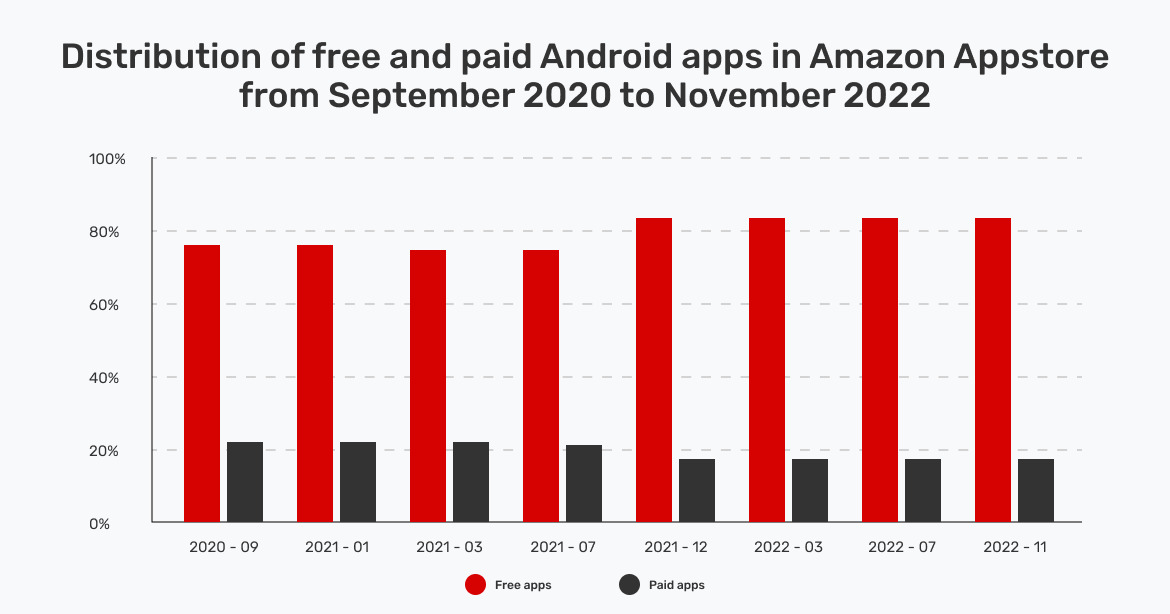
94.2% of iOS apps were free as of November 2022, almost the same as the Google Play Store.
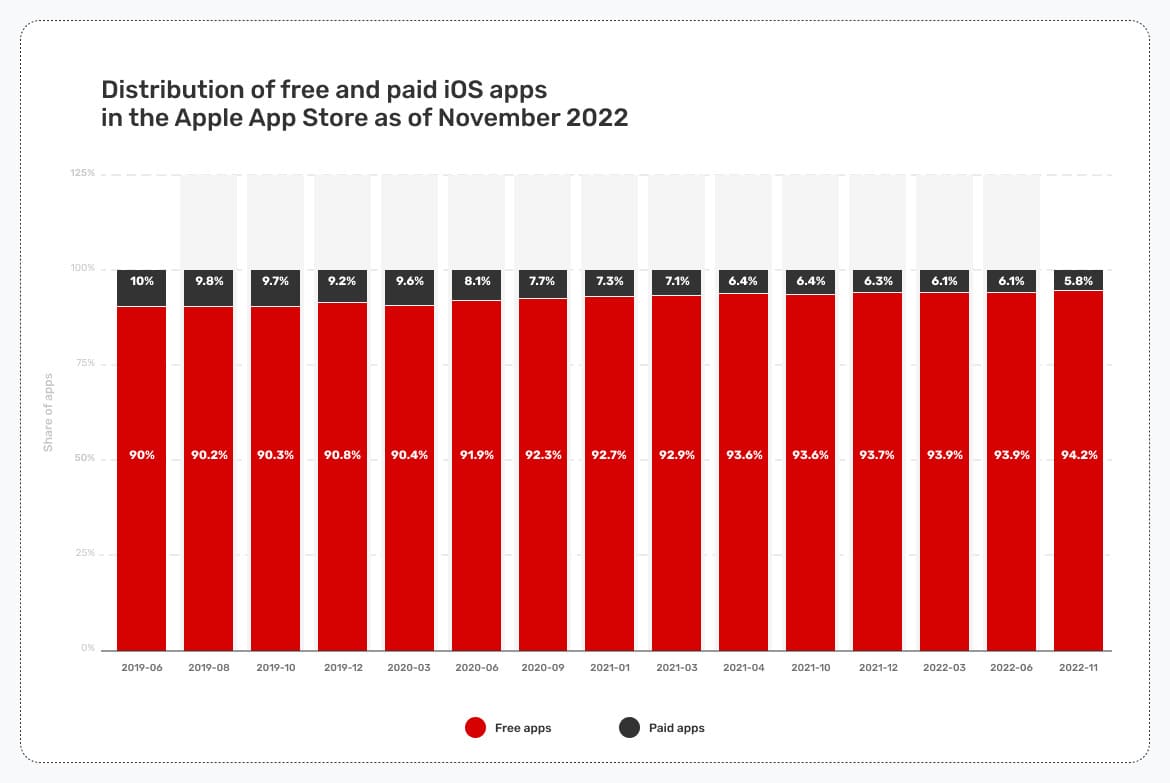
These statistics indicate that any app on your phone is more likely to be free than paid. But app developers need to make money, which leads to the monetization methods we’ll show you.
11 proven ways to make money from apps
There’s no limit to how much you can make from your app. That depends on the number of users and the monetization strategy you select. There are many ways to monetize an app, and the most suitable one is contingent on your business goals and target audience.
Advertising remains the most common way to earn income from apps. However, there are more creative and difficult methods that we’ll talk about.
1. Make money from Android apps and APK files with Direct Link
Adsterra offers a simple way to earn revenue from your app or APK file by placing a Direct Link in it. Once a user clicks on the link, it redirects them to an advertising page. There are thousands of ads available, and Adsterra uses algorithms to redirect your user to those relevant to your audience.
Here’s how to add a Direct Link to your app:
- Sign Up or Log In as a publisher on Adsterra.
- Look for the vertical toolbar on your dashboard and head to the Direct Links tab.
- Hit the Create Direct Link button.
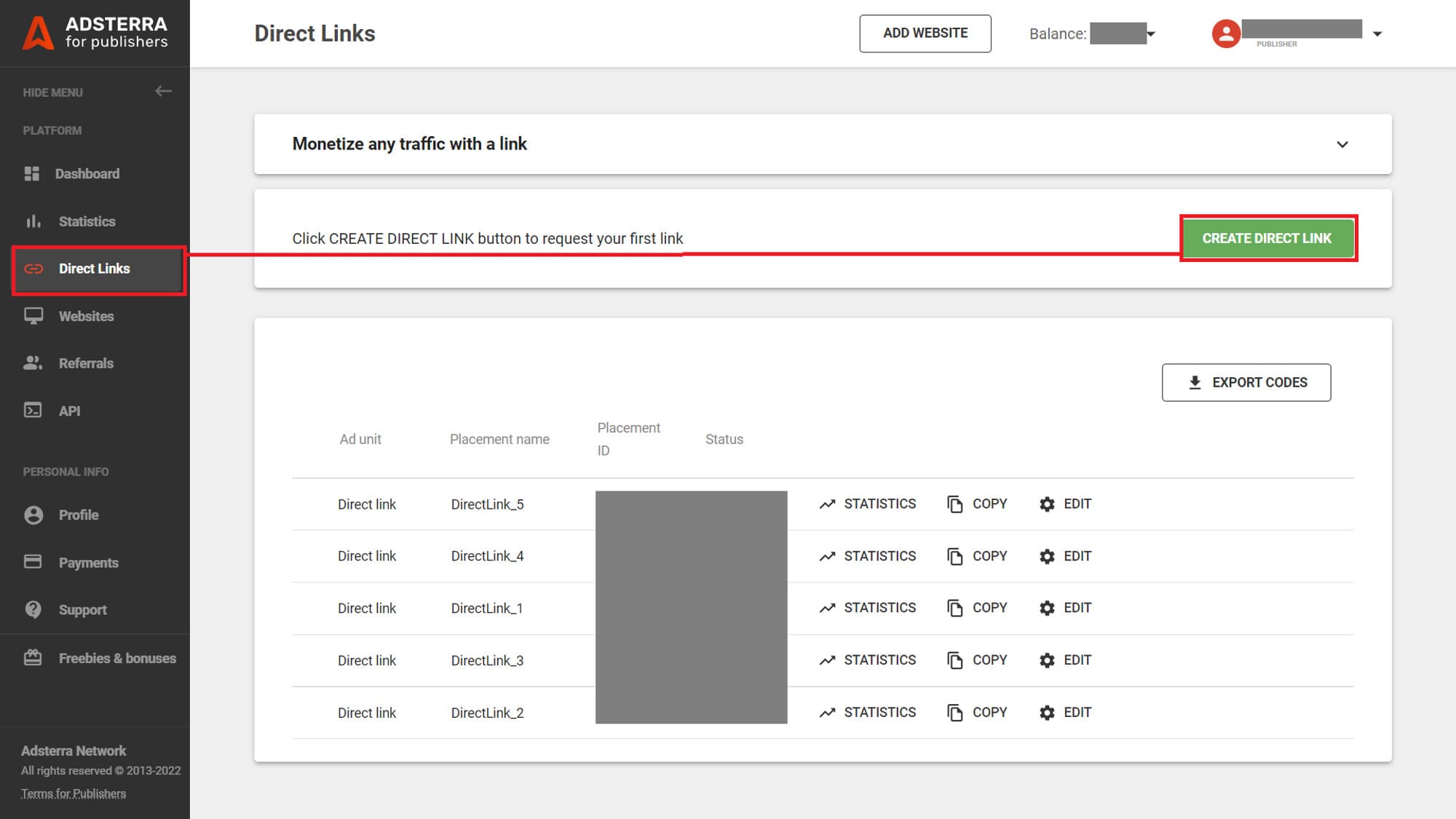
- Choose your Direct Link’s category or leave the radio button as it is and click Add.
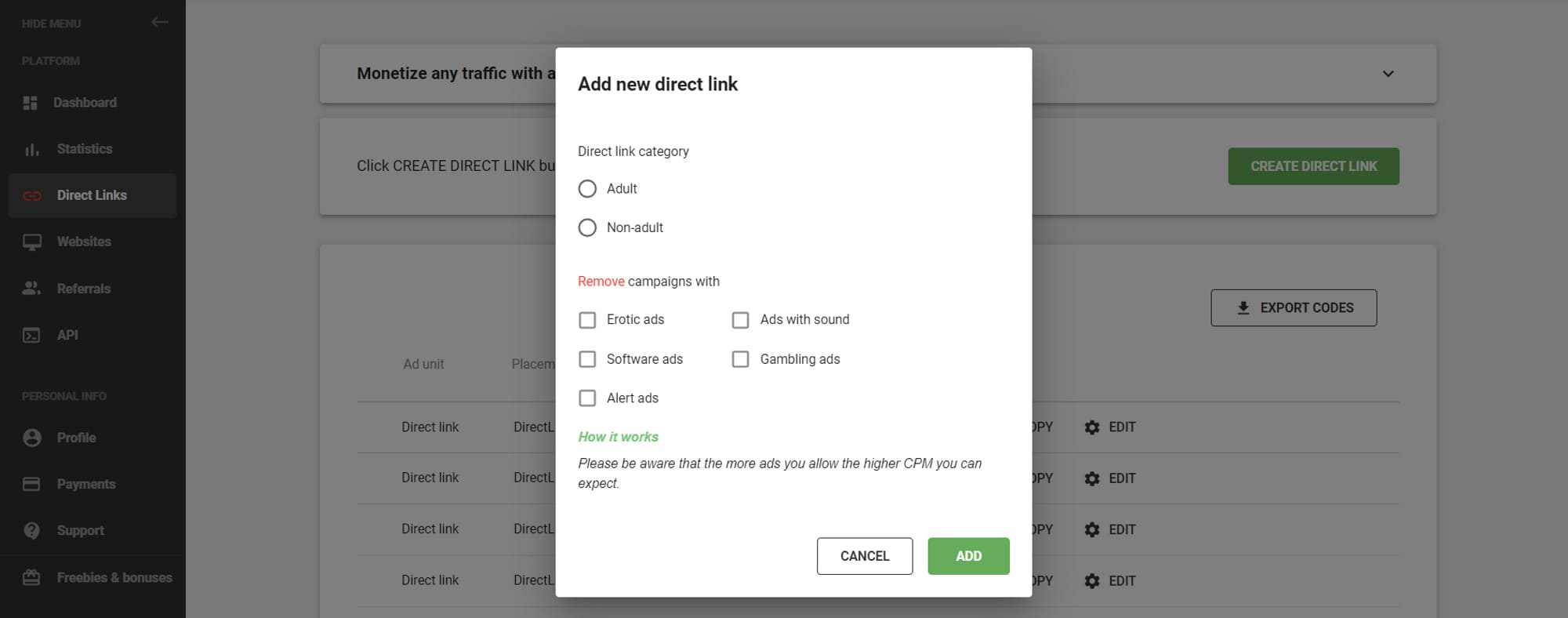
- Wait for approval and copy the ad code.
- Paste the ad code into your app.

2. Advertising
As we’ve mentioned, advertising is the most common way to get revenue from a free app. You can show your users ads and earn money any time they view or click on them. Different types of in-app advertisements include:
Interstitials
These are full-screen ads that cover your app’s interface. They are displayed at transition points in your app’s workflow, for example, during pauses in a mobile game. The user can tap on the ad or close it and return to the app after some seconds.
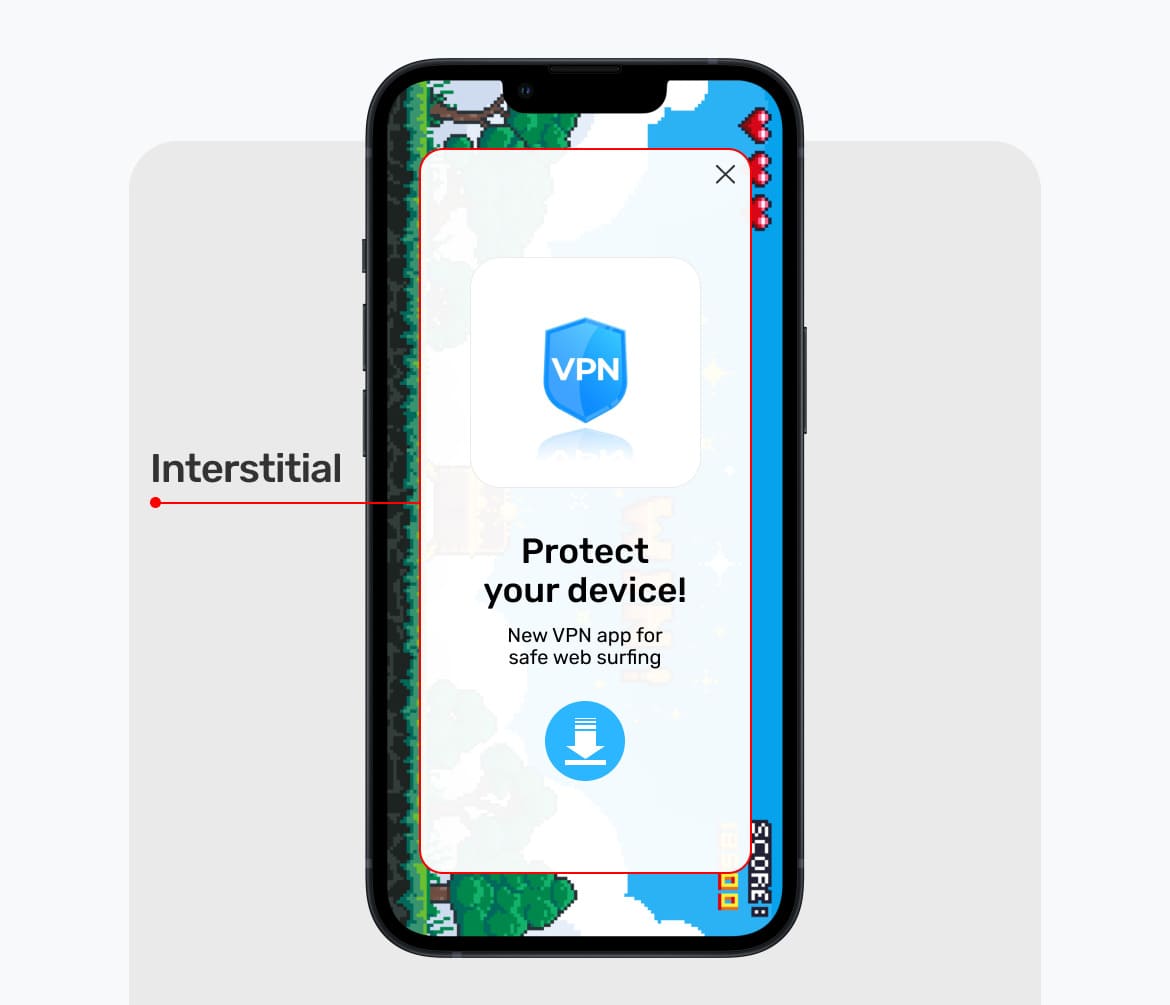
Banners
This type of ad occupies a spot within your app either at the top or bottom. They remain on the user’s screen while they use the app and refresh automatically after a certain period. This is the most common ad type for app publishers new to advertising.
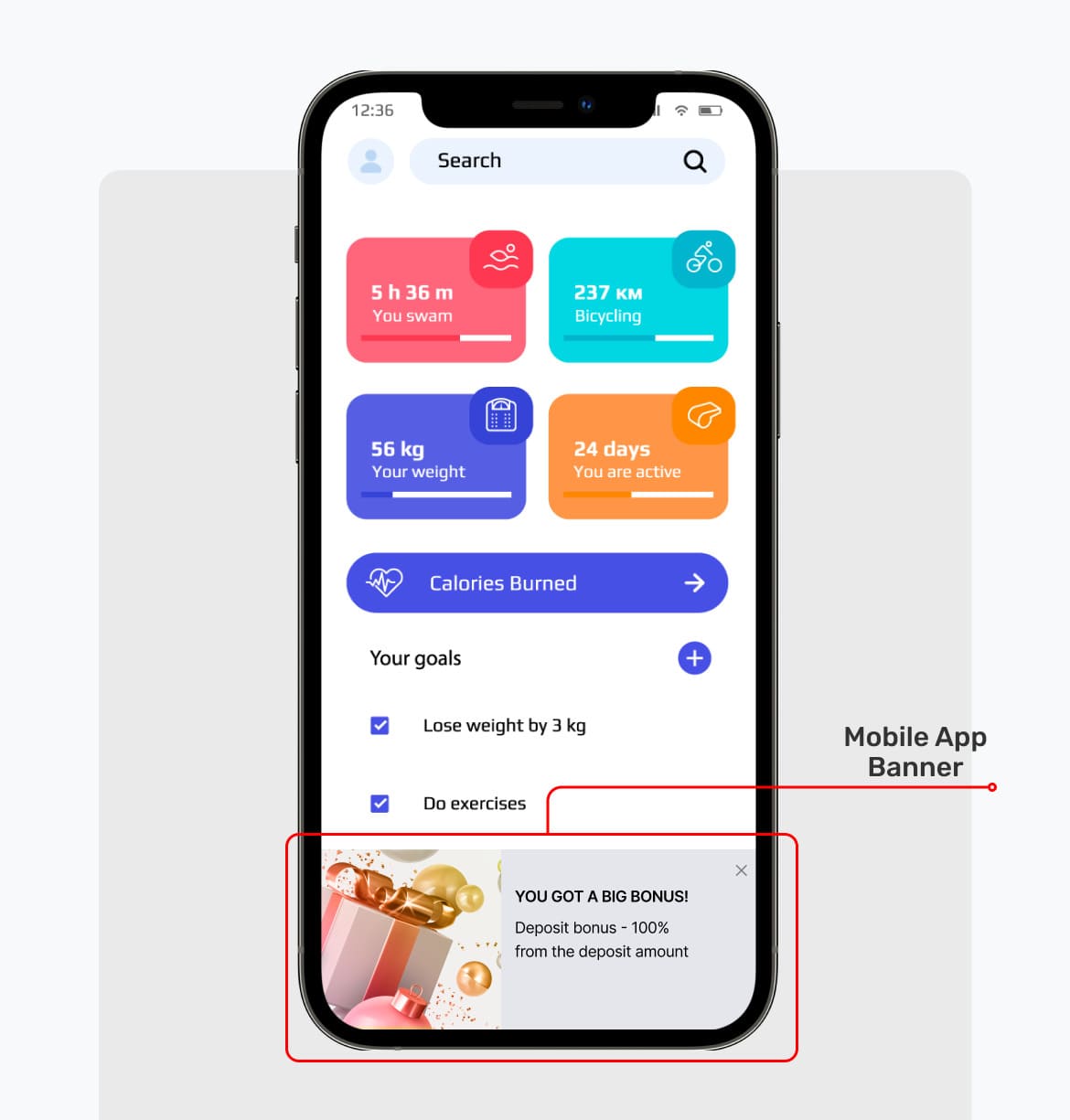
Native Ads
This is an advertisement that resembles your app’s content. They use the same UI components as your app and match its look and feel. For example, if you have a news app, the ad will appear like an article on the user’s feed.
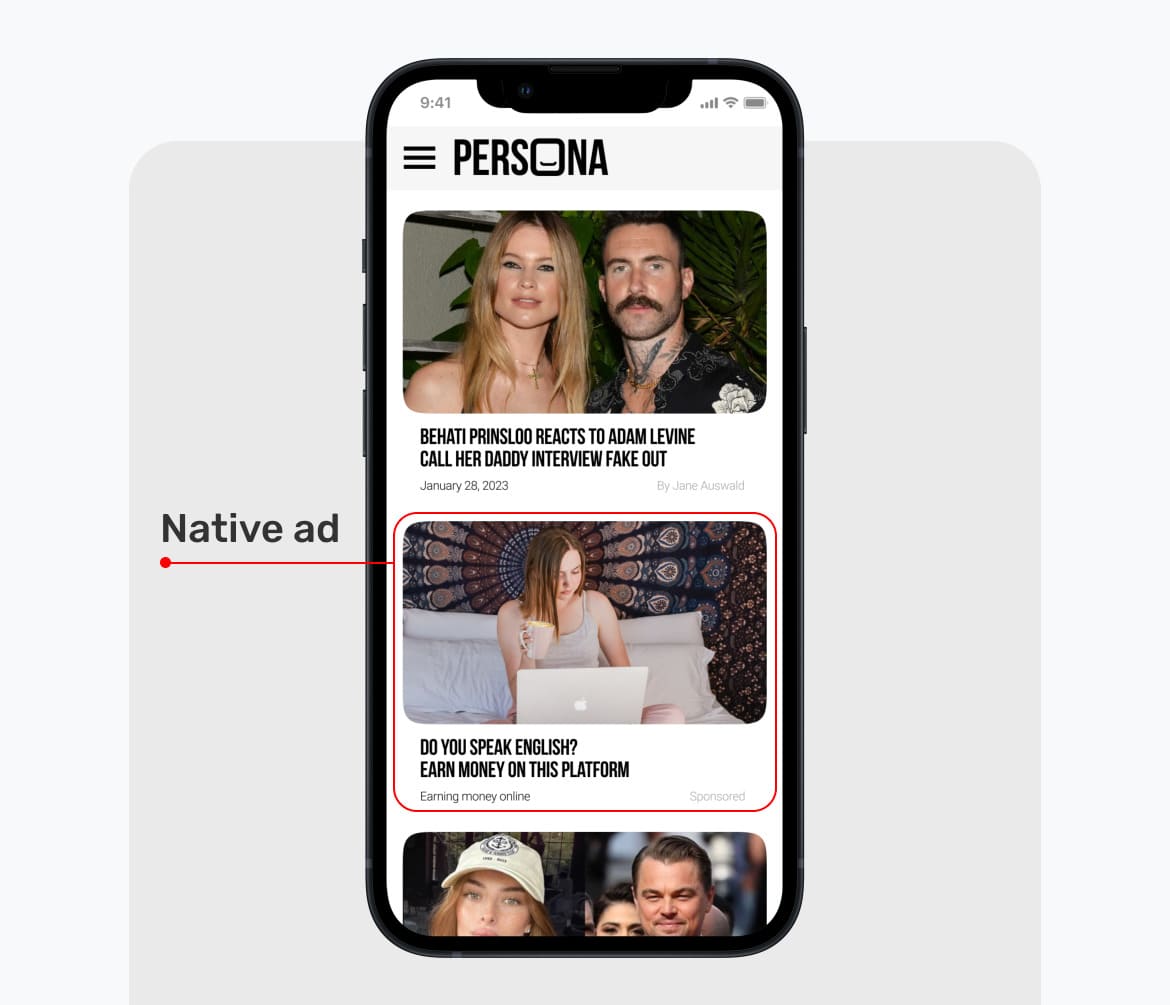
Rewarded videos
This type of ad is creative. It lets users watch a video advertisement in exchange for a reward within the app. It’s most common in mobile games, where players can watch a video to revive their character after “dying” during the gameplay. It represents a win-win situation for the user and advertiser.
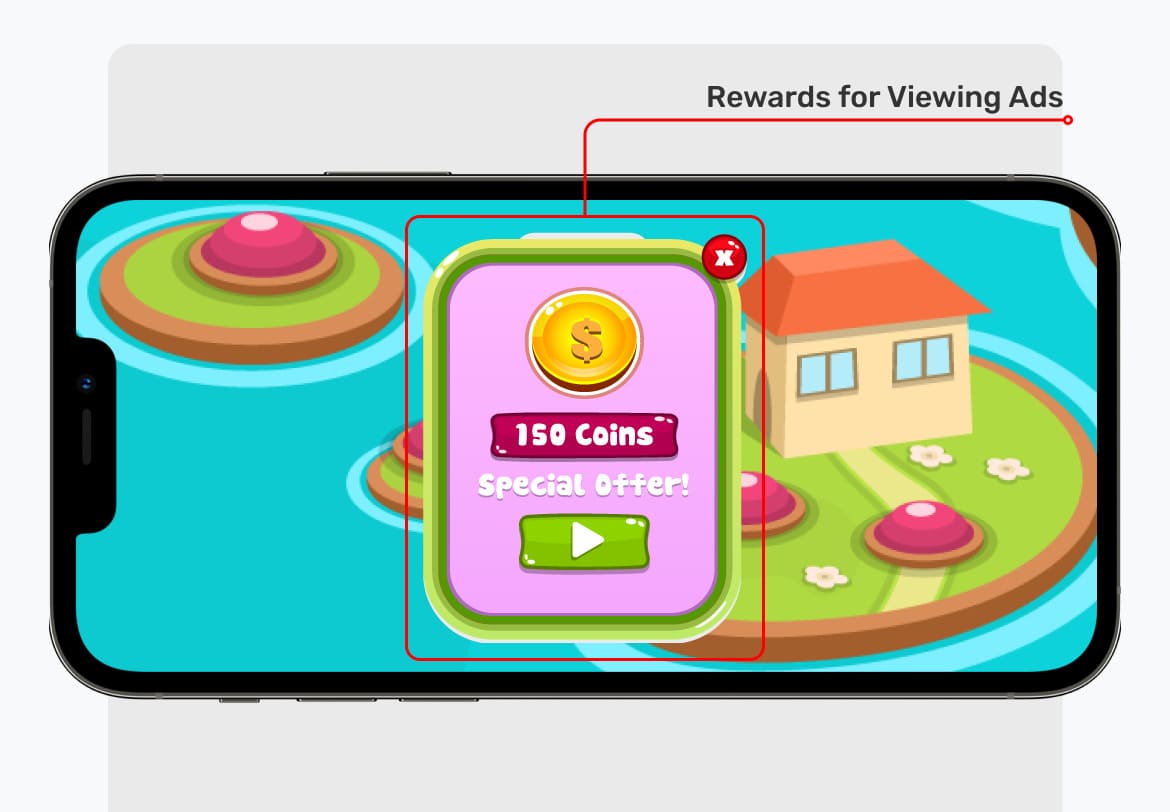
| Pros of in-app advertising | Cons of in-app advertising |
|---|---|
| 1. You can choose from a variety of ad formats; | 1. Too many ads can annoy your users; |
| 2. Display ads are effective in earning you income; | 2. Some ad networks serve low-quality and spammy ads; |
| 3. Ads can be personalized, which makes users more likely to interact with them. | 3. Many users have ad-blocking software; |
| 4. Your competitors can advertise in your app. |
Adsterra makes it easy to create and deploy advertisements in apps with Direct Links.
3. Subscriptions
You can charge users for access to exclusive content (e.g., videos and news articles) on your app via a subscription model. It’s usually a recurring amount paid monthly or annually. This model assures app developers of earning income as long as they have subscribers. It also makes it easy to plan ahead about finances and forecast revenue growth.
A major drawback of this method is that you can face backlash from your users when switching from a free model to subscriptions.
| Pros | Cons |
|---|---|
| 1. More stable income; | 1. It can be challenging to attract paying subscribers; |
| 2. You’ll get a more engaged audience because they’re willingly paying for your app. | 2. You must continually add new features to retain subscribers. |
4. In-app purchases
You can charge users real money to purchase virtual items and privileges within your app. Most mobile games use this method, letting users buy virtual items like clothing, characters, and in-game currency.
One of the most popular examples is Fortnite, a free-to-play game where players can spend real money to buy the in-game currency called V-Bucks. Fortnite made over $9 billion in revenue in its first two years of existence, proving the viability of this monetization method.
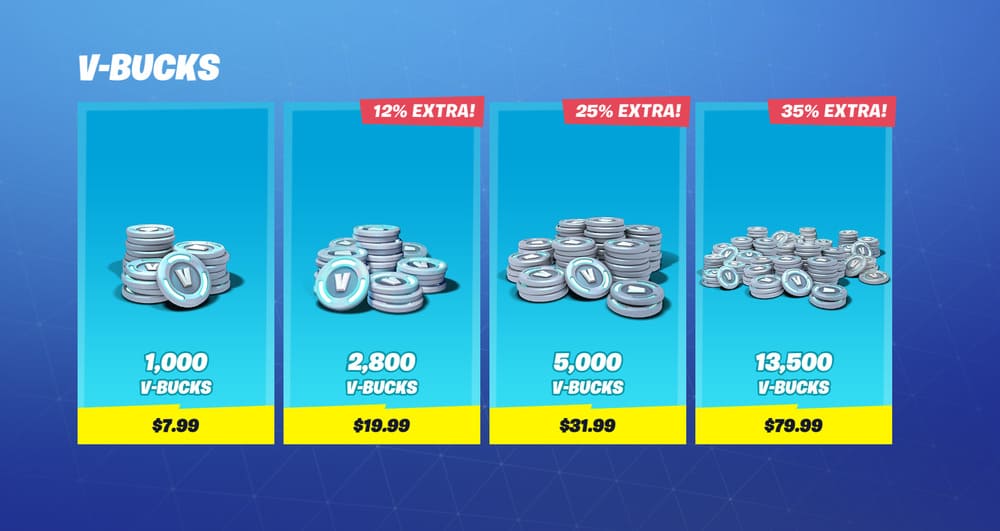
If you plan to make money this way, note that Apple and Google take a cut of all purchases made through their respective app stores. Both companies charge 15% for developers with less than $1 million in annual sales and 30% above that. The payment gateway you select may also take a fee that’s usually between 1% and 5%.
| Pros | Cons |
|---|---|
| 1. Can be very lucrative if you have an engaged user base; | 1. You need more customer support staff to manage user inquiries; |
| 2. Gives users more freedom to decide how to enjoy your app. | 2. Requires extra work and integrations on your app’s backend; |
| 3. Higher app development costs. |
5. Sponsorship
This type of monetization isn’t too common but it’s doable. You can solicit sponsors that have the same target audience as your app and charge them money. For example, if you run an app for educational content, a company that sells textbooks can be a strategic sponsor.
Before creating your app, form a list of companies that would benefit from partnering with you. Then, contact them with a sponsorship pitch once your app is ready. It can be very lucrative if you target the right sponsors.
| Pros | Cons |
|---|---|
| 1. Brands can get more recognition on your app and your users can get deals and discounts from them; | 1. Must have a strong and user base to adopt this model; |
| 2. Little disruption to the user experience. | 2. The wrong sponsors can affect your app’s reputation. |
6. Referral marketing
This method involves promoting a product and earning income each time you drive a customer towards that product. For instance, you can promote another app or website using popup ads and earn money for each newly registered user. You can also charge based on the number of web visitors referred from your own site.
| Pros | Cons |
|---|---|
| 1. Referrals command a high price; | 1. Can be challenging to track a referral campaign accurately; |
| 2. It is a very trusted monetization model. | 2. It is time-consuming. |
7. Collecting and selling data
Apps collect a lot of data about user behavior. You can sell this data to researchers and interested companies for a considerable sum, but be careful not to run afoul of privacy laws. The data for sale could be email addresses, personal preferences, and location. Companies pay for this data because it helps them to run more targeted marketing campaigns.
This strategy works for both Android and iOS apps. Yet, it’s harder on the latter because Apple has instituted a lot of privacy features that give more control to its users concerning if or not they want to be tracked.
| Pros | Cons |
|---|---|
| 1. Data can make marketing much easier for brands; | 1. Vulnerable to data leaks, which can bring severe consequences; |
| 2. The data can help you improve onboarding for new customers and retain existing ones. | 2. Makes it difficult to maintain accountability with users. |
8. Freemium upsell
Freemium apps are apps that are free to download but require payment to access specific features. Think of it as a hook-and-bait strategy. You hook the customer with your free features and bait them to pay for the premium ones. For example, if you have a music streaming app, you can make it free to stream old music but require payment for new ones.
This method makes it easy to gain lots of new users because they don’t have to pay to download the app but only to access more features.
| Pros | Cons |
|---|---|
| 1. Removes the need for ads that may be intrusive; | 1. Revenue can fluctuate depending on many factors; |
| 2. Easy and low cost to maintain. | 2. Can cost a lot to support a large number of non-paying users; |
| 3. High churn rate. |
9. Transaction fees
You can collect transaction fees if you run an app that facilitates commerce between users. For example, if you operate a marketplace for used gadgets, you can collect a fixed percentage of each transaction to earn income.
Acceptable transaction fees are usually between 1% and 5%. This way, you just need to focus on generating transaction volume on your app to earn more income.
| Pros | Cons |
|---|---|
| 1. Easy to set up and maintain; | 1. You can’t run it alongside other monetization models; |
| 2. Consistent income. | 2. It needs more customer support staff. |
10. Donation-Based Crowdfunding
You can earn revenue from users that like your app and want to support it. Most users may not contribute but a few loyal ones might be enough to pay the app’s bills and earn you extra income.
You can even give users that contribute certain privileges that other users can’t access. Platforms like Patreon have made it easy for app creators to add a “donate” or “support” button to their apps with a simple line of code.
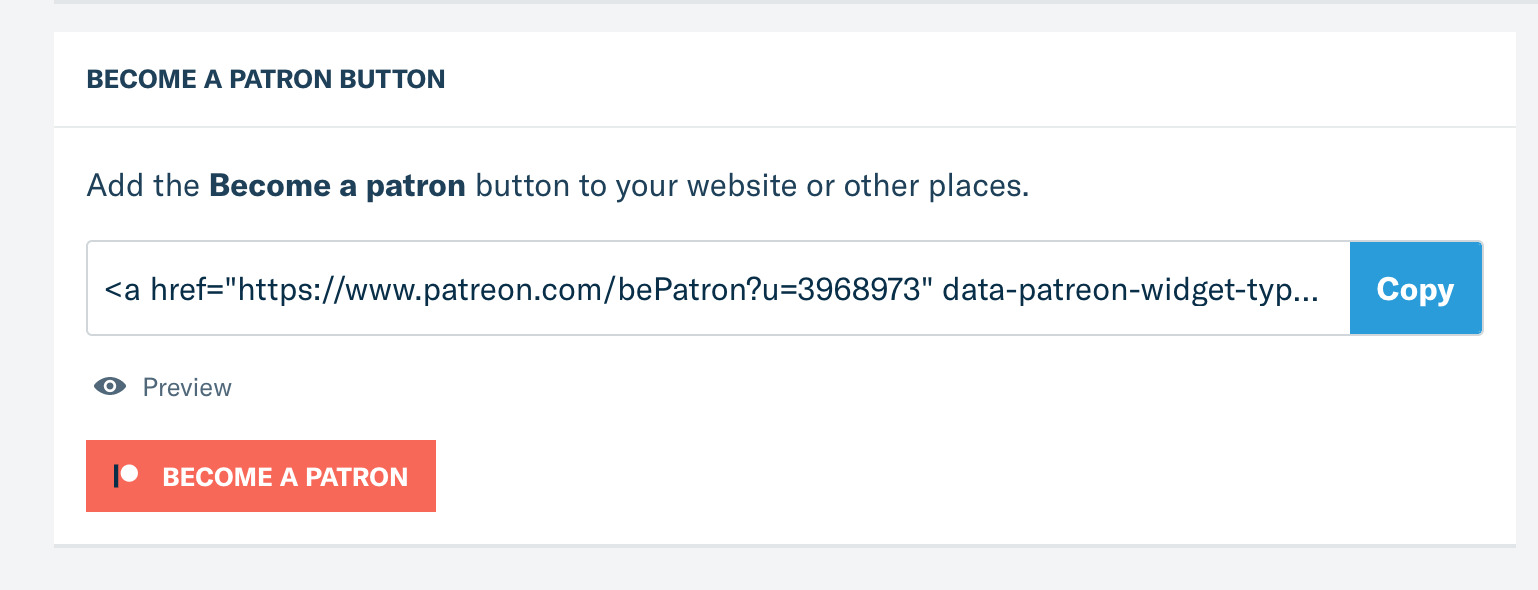
| Pros | Cons |
|---|---|
| 1. Easy to set up; | 1. Crowdfunding campaigns aren’t easy to run; |
| 2. No need for disruptive ads or selling user data; | 2. Must reveal more about your app’s operations to users; |
| 3. Better rapport with your loyal customers. | 3. This model is not suitable for all types of applications. |
11. Selling merchandise
You can sell merchandise relevant to your target audience to earn money. It could be t-shirts, phone cases, accessories, toys, backpacks, stickers, etc.
One company that has perfected this model is Rovio, the creator of the popular Angry Birds game. It sells millions of Angry Birds-branded merchandise each year and has even licensed its intellectual property for a big movie deal.
| Pros | Cons |
|---|---|
| 1. Flexible business model; | 1. Unpredictable revenue; |
| 2. Merchandise improves your brand exposure; | 2. Hard to compete unless you have strong brand recognition. |
| 3. You can adapt this model to include lucrative brand partnerships. |
How to make money with an app — summary
| Monetization method | Works best for | Things to consider |
|---|---|---|
| Direct Link | Any type of app | Place the links where users will likely see them, e.g., texts, next to call-to-action buttons, image previews, 404 pages, etc. |
| In-app advertising | Any type of app | Ensure the ads aren’t intrusive; Don’t insert too many ads on the same page. |
| Subscriptions | Content-based apps | Provide great customer support; Always add new content to retain subscribers. |
| In-app purchases | Games | Avoid dodgy UI practices that cause accidental purchases; Don’t make in-app purchases too expensive (bulk purchases of inexpensive items can make up for it). |
| Sponsorship | Content-based apps | Target sponsors that are relevant to your audience. |
| Referral marketing | Finance apps | Seek referral programs with high commissions; finance apps usually offer the highest referral commissions. |
| Collecting and selling data | Social apps | Make it clear to users that you collect and store their data and seek their consent. |
| Freemium upsell | Utility apps | You must continually test and review your monetization strategy; Give good free features to lure in the user. |
| Transaction fees | Online marketplaces | Have adequate customer support staff to manage user inquiries; Focus on growing your app’s transaction volume. |
| Donation-based crowdfunding | Cause-based apps | Be transparent to contributors about how you use their funds; Give in-app rewards and privileges to contributors. |
| Selling Merchandise | Gaming apps | Perform A/B tests to see which types of merchandise bring the highest sales and stick to them. |
Adsterra lets you install an ad code on your app in a few steps and start monetizing traffic. You can get approved in as low as 10 minutes.
The best tips on how to make money from your app
Analyze the competition
Check what monetization methods your competitors are using because you share the same target audience. By studying them, you can easily find out which strategies are the most effective to earn money in your niche.
Know your audience
Picture yourself in your target audience’s shoes. What types of ads will I like to see? What features will I pay to subscribe to? What in-app items will I buy? This will help you know how to offer real value to your users.
Category
Some monetization strategies work best for specific types of apps. For example, in-app purchases work best for mobile games and subscriptions work best for content-based apps. Pay attention to your app’s category and know which strategies are more likely to earn you income than not.
Conclusion
Monetization is an essential thing that every app developer must think of. We’ve listed the most common ways to make money from your apps and successful examples of some of them. We’ve also provided tips that’ll help you choose the best method to earn the highest income from your app.
App development can be very lucrative if done right but you won’t earn considerable income if you don’t use the best strategy. Adsterra can help you figure out the best monetization strategy for your mobile website as well since we are providing user-friendly ad units like Social Bar (not the in-app format) which can return you great gains.
Making money from apps FAQs
How do free apps make money?
Free apps make money in a lot of ways. Their owners can display advertisements to users and earn income from views and clicks. They can charge subscriptions to access premium content or sell in-app items to users. There’s an endless list of monetization strategies, some of which we talked about in this article.
How do you earn money from Android apps?
Most top-grossing Android apps on the Google Play Store earn money by combining advertising and in-app purchases. Subscriptions are also a major driver of revenue for such apps. These are the most effective monetization methods at large but they may not be what’ll work best for you. Crowdfunding, sponsorship, and referral marketing are also valid methods that you can adopt.
How do you make money from APK files?
You can make money using Adsterra’s Smart Direct Link. It’s an ad code that you place in the app that generates a unique link. Once a user clicks on the link, it takes them to another advertising page and earns income for the app owner. Adsterra uses algorithms to ensure that your users are redirected to pages that are relevant to them.
How much money can you make from an app?
There’s no limit on what you can earn from your app. It depends on how many users you have and how engaged they are. You can make a few hundred dollars or as much as millions of dollars. A few apps even make billions of dollars because they have a user base in the tens of millions.
What is the best type of app to earn money?
There’s no “best” type of app to earn money per se. Yet, some app categories tend to make more money than others. These include games where developers sell in-app items and content-based apps where the owners charge subscriptions to access exclusive content.
Can you become a millionaire by making an app?
As we’ve mentioned, there’s no limit on how much you can earn from your app. You can earn millions if you have a large user base combined with an effective monetization strategy. Note that most apps don’t make millions for their owners, however, the number of apps earning such revenue is increasing every day due to explosive growth in the mobile app market.
How much does it cost to create an app?
If it’s a gaming app it may cost hundreds to thousands of dollars or even millions to develop depending on its specifications. But if you’re good at coding and training neural networks, you can launch your ChatGPT-based (just like an illustration) app with minimum functionality: this will not be as expensive as it may seem.
Networking is king when it comes to launching apps and saving money. Collaborate with skilled developers and marketers whom you will later pay a share from revenues.
